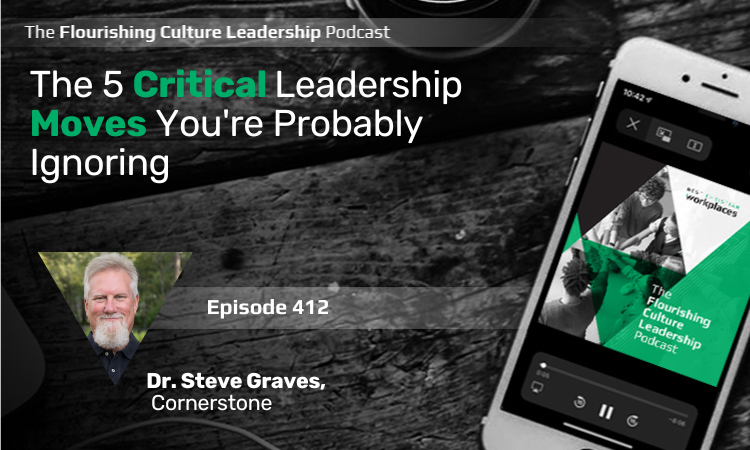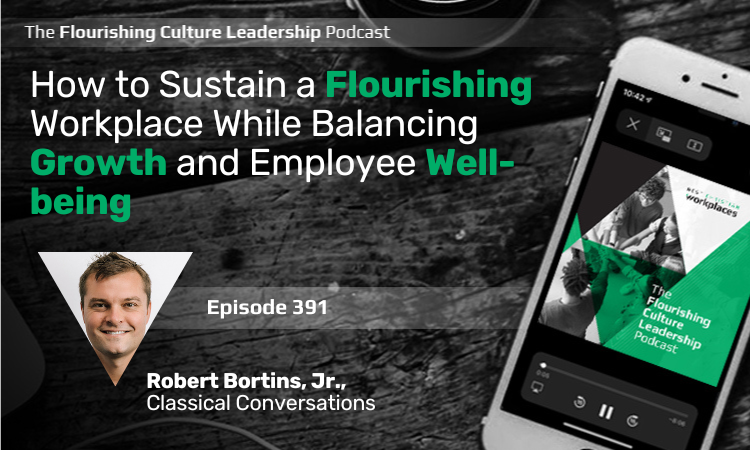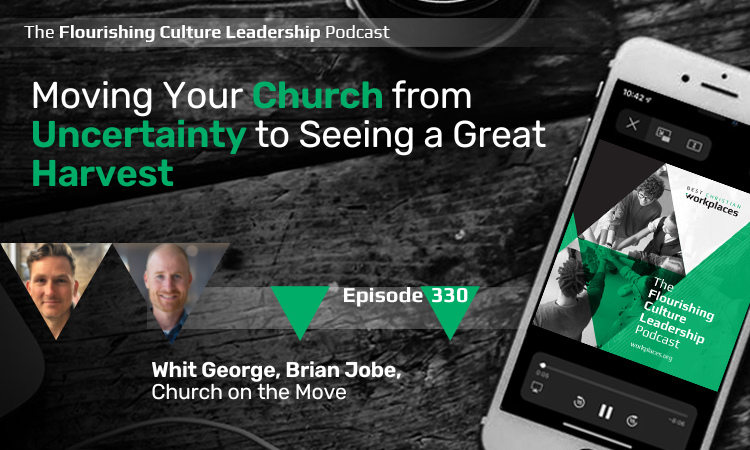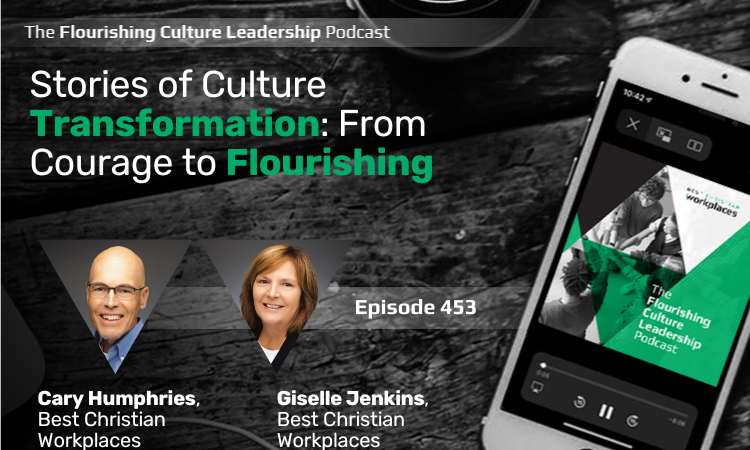3 min read
412: The 5 Critical Leadership Moves You're Probably Ignoring
 Best Christian Workplaces
:
October, 21 2024
Best Christian Workplaces
:
October, 21 2024

In today’s episode, we’re diving deep into the essential tasks every senior leader should focus on, helping you prioritize what matters most in your role. Dr. Steve Graves is the founding partner of Cornerstone, an executive coach, and a seasoned advisor. He shares his insights on how leaders can integrate faith and strategy to lead with impact and clarity.
Listen to the Audio
Listen in Apple Podcasts | Listen in Spotify | Listen in YouTube Music
In this episode:
Steve Graves' Background and Experience:
- Dr. Graves works with CEOs, business owners, and nonprofits to integrate faith into business practices. (02:57)
- He focuses on leadership, strategy, and empowering future leaders. (03:20)
- His background includes advising executives and contributing to nonprofit boards, blending Christian values with practical leadership insights. (03:34)
Christian Faith and Business Leadership:
- Graves shares a story about attending a gathering of pastors and CEOs where the two groups leaned into different aspects of leadership. (04:20)
- Pastors focused on the "soft side" (pastoral, shepherding). (05:45)
- CEOs emphasized strategy and business dynamics. (06:12)
- This experience inspired Graves to explore how faith and business can be integrated more harmoniously. (06:39)
Leadership Tasks and the Pareto Principle:
- Graves discusses his book The Five Tasks: What Every Senior Leader Needs to Do! and how leaders often spend too much time on tasks others should handle. (07:09)
- He emphasizes the importance of delegating and focusing on essential leadership tasks, using the Pareto principle (80/20 rule). (07:33)
Leadership Styles:
- Graves explains the difference between “performer contributors” (who drive results through their own skills) and “manager contributors” (who lead others to achieve results). (08:33)
- Many leaders struggle to transition from performing tasks to managing people, often leading to misplaced focus on minor tasks. (09:23)
Macro vs. Micro Management:
- Graves introduces the concept of “macro management,” where leaders focus on setting direction and goals (the why and what) rather than micromanaging details (the how and when). (11:01)
- He differentiates between macro managers, micromanagers, and non-managers, noting that effective leaders provide guidance while empowering others to handle the details. (12:37)
Strategic Leadership and Organizational Direction:
- Leaders must set clear direction: Decide where the organization is heading and what paths not to pursue. (16:21)
- Example: Taco Bell's transformation from a dine-in restaurant to a taco delivery system. (17:23)
- Emphasis on the leader's role to communicate both "where we are going" and "where we are not going." (18:25)
Balancing Speed of Change:
- Leaders also need to set the speed of their organization relative to the market. (20:58)
- Companies rarely set market speed; they adapt to it. (21:17)
- Leaders must choose how fast or slow to grow and handle consequences. (21:58)
- Example: A CEO slowed growth to allow leadership development to catch up, resulting in future growth. (22:12)
Growth Challenges and Organizational Cycles:
- Hypergrowth can lead to challenges if talent and infrastructure don’t keep pace.
- Organizations go through life cycles similar to humans, with growth phases requiring different leadership approaches. (26:25)
- Balancing health and growth is crucial for sustainable development. (27:27)
Resource Allocation:
- Senior leaders must allocate key resources: people, structure, and money. (29:48)
- People are the most critical resource, and hiring should focus on character development as well as skills. (30:14)
- Leaders should prioritize investment in people development for long-term success.
Re-Recruiting Top Talent
- Leaders should focus on re-recruiting their top employees rather than only seeking new talent. (30:35)
- Investing time and energy in existing talent can yield better results than hiring new personnel. (31:53)
Developing Leaders
- It's crucial to create an environment (an incubator or greenhouse) that helps employees grow beyond their initial strengths. (33:33)
- Leaders need to ensure their teams develop a full spectrum of skills to reach their potential.
Importance of Organizational Culture
- A healthy culture is essential for a flourishing workplace and should be viewed as a significant asset. (34:14)
- Leaders must define, articulate, and institutionalize culture beyond just words; it involves aligning actions with stated values. (35:17)
- Cultural alignment requires leaders to integrate their authority, budget, and decision-making processes with the organization's values. (35:49)
Generational Leadership Transition
- There is a shift in leadership as baby boomers leave the workforce, making way for younger generations. (38:01)
- The next generation should be allowed to redefine mission and vision in their own terms, even if it resembles traditional goals. (38:59)
- Flexibility from older leaders is necessary to empower younger leaders in shaping their approaches to leadership. (39:06)
Final Thoughts
- Steve reflects on the transition of his coaching practice towards serving a broader audience through initiatives like Cornerstone Plus+. (40:24)
- He expresses optimism about the future of leadership within the context of faith and ministry, highlighting the importance of encouraging upcoming leaders. (41:27)
Read the Transcript
Read a complete, word-for-word transcript of the episode
FOLLOW OUR HOST
Follow our Host, Al Lopus, on LinkedIn & Twitter.
Email our host at al@workplaces.org

391: How to Sustain a Flourishing Workplace While Balancing Growth and Employee Well-being
Explore essential leadership habits for a flourishing workplace with Robert Bortins, Jr., CEO of Classical Conversations. Discover practical insights...

330: Moving Your Church from Uncertainty to Seeing a Great Harvest
Would you like to see your church's staff culture radically transformed in two short years? Listen to the actionable steps to tend to the soil of...

